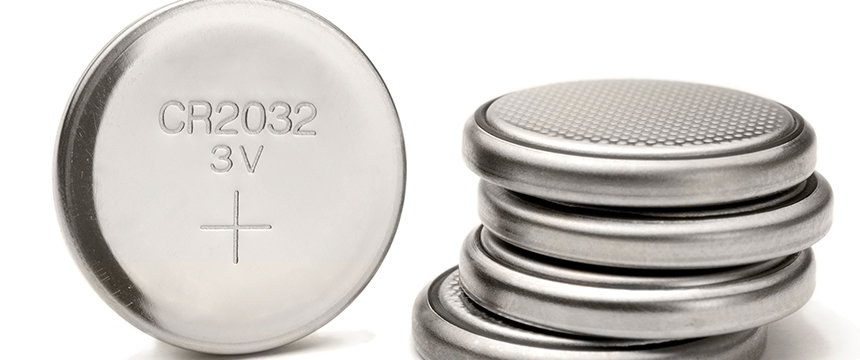New Requirements for Manufacturers and Importers of Consumer Products Containing Button Cell or Coin Batteries

The Consumer Product Safety Commission (CPSC) recently adopted comprehensive new safety and labeling requirements for consumer products containing button cell and coin batteries (or products intended to contain them) that have wide-ranging implications for manufacturers and importers of such products.1
The new requirements were prompted by “Reese’s Law,” a federal law passed in August 2022 intended to protect children and other consumers against the hazard of ingesting button cell or coin batteries.2 Reese’s Law directed the CPSC “to promulgate a final consumer product safety standard for button cell or coin batteries and consumer products containing [them],” addressing such products’ battery compartments and warning labels. After extensive testing, the CPSC adopted and codified by reference an existing voluntary standard, ASNI/UL 4200A-2023.3
The clock has already started ticking; manufacturers and importers of covered products have until March 19, 2024, to comply with these new requirements.4
What are button cell and coin batteries?
Federal law defines a “button cell and coin battery” as “(A) a single cell battery with a diameter greater than the height of the battery; or (B) any other battery, regardless of the technology used to produce an electrical charge, that is determined by the [CPSC] to pose an ingestion hazard.”5
What kind of consumer products are affected?
The new CPSC requirements apply to all consumer products containing button cell or coin batteries, except for children’s toy products. Reese’s Law — and the new CPSC requirements by extension — specifically exempt toy products,6 which have their own battery accessibility and labeling requirements under existing federal regulations.7 However, children’s products that are not toys but contain button cell or coin batteries are still required to meet the performance and labeling requirements in this final rule; for instance, children’s shoes that light up.8
What are the key takeaways of these new requirements?
The CPSC’s new rule has two main categories: (1) labeling requirements and (2) “performance requirements” related to how a product secures its battery.
Labeling Requirements
The CPSC’s new rule incorporates by reference UL 4200A-23, which addresses the requirements of Reese’s Law.9 The rule, like Reese’s Law, requires applicable consumer products to display warning labels in several locations, including on the battery-containing product itself, on the product’s packaging, and in accompanying literature (e.g., a user’s manual).10
Such warning labels must clearly identify the hazard of ingesting the batteries, instruct consumers to keep such batteries away from children, and instruct consumers to seek immediate medical attention if such a battery is ingested.11
Performance Requirements
The new rule adopts what the CPSC calls “performance requirements,” whereby a consumer product containing button cell or coin batteries must secure such a battery inside the product under reasonably foreseeable use or reasonably foreseeable misuse to minimize the risk of ingestion.12 These performance requirements likewise stem from UL 4200A-2023 and include testing of how and by what means one can open a product’s battery compartment, as well as testing for drops, compression, and impact to the product.13
What are the penalties for failing to comply with these new requirements?
The new CPSC requirements promulgated under Reese’s Law are enforceable under the Consumer Product Safety Act (CPSA).14 Accordingly, manufacturers and importers of noncompliant products risk potentially steep civil penalties of up to $100,000 per knowing violation15 — or even criminal penalties for knowing and willful violations.16
The CPSA also creates a private cause of action for individuals injured by noncompliant products, meaning any person can sue someone who knowingly or willingly violates a rule promulgated under the CPSA to recover damages for injuries stemming from that violation.17 This means that manufacturers and importers of noncompliant products risk increased exposure to litigation from affected consumers under the CPSA and products liability theories. Noncompliance may also result in class action demand letters and lawsuits that are time-consuming and costly to defend. Whether such challenges present individually or on a class basis, the litigation risk is potentially very steep.
Ultimately, the reason Congress passed Reese’s Law was to protect children and other consumers from the harm caused by ingesting button cell or coin batteries.18 Accordingly, legal and regulatory challenges await companies that do not meet these new requirements and continue to manufacture or import noncompliant products.
I manufacture or import a covered product. What do I need to do?
Manufacturers and importers should take immediate action to ensure their products comply with this new rule, including consulting with experienced counsel as appropriate. Additionally, ensuring compliance will require manufacturers and importers of covered products to coordinate with their suppliers. To that end, manufacturers and importers should prioritize these new CPSC requirements when conducting their annual compliance reviews or audits to identify and correct any compliance gaps.
With only months to go, these new requirements should be top-of-mind for all manufacturers and importers of products containing button cell or coin batteries.
1 Safety Standard for Button Cell or Coin Batteries and Consumer Products Containing Such Batteries, 16 C.F.R. § 1263 (2023).
2 Reese’s Law, 15 U.S.C. § 2056e.
3 16 C.F.R. § 1263.3 (2023).
4 Id. § 1263.1 (2023).
5 Reese’s Law § 5; see also 16 C.F.R. § 1263.2 (2023).
6 Reese’s Law §§ 4—5; see also 16 C.F.R. § 1263.1(c) (2023). Reese’s Law § 5 defines a “toy product” as “any object designed, manufactured, or marketed as a plaything for children under 14 years of age.”
7 See 16 CFR § 1250 (2023).
8 Safety Standard for Button Cell or Coin Batteries and Consumer Products Containing Such Batteries, 88 Fed. Reg. 65276 (September 21, 2023) (to be codified at 16 C.F.R. pts. 1112, 1263).
9 16 C.F.R. § 1263.3 (2023). Note that Reese’s Law also provides labeling requirements for the packaging of button cell and coin batteries themselves, which the UL 4200A-23 standard does not address. Accordingly, the CPSC adopted a separate rule related to this requirement.
See 16 C.F.R. § 1263.4 (2023).
10 Reese’s Law § 2(a)(2); 16 C.F.R. § 1263.3 (2023).
11 Reese’s Law § 2(b).
12 16 C.F.R. §§ 1263.1(a), 1263.3 (2023).
13 See Safety Standard for Button Cell or Coin Batteries and Consumer Products Containing Such Batteries, 88 Fed. Reg. at 65278 (Table 1a.).
14 See Reese’s Law § 2(c); see also 15 U.S.C. §§ 2058, 2068.
15 15 U.S.C. § 2069.
16 Id. § 2070.
17 Id. § 2072. Note that the matter in controversy must exceed $10,000 to qualify under this private right of action.
18 Reese’s Law, 15 U.S.C. § 2056e; see also 16 C.F.R. § 1263.1 (2023).


